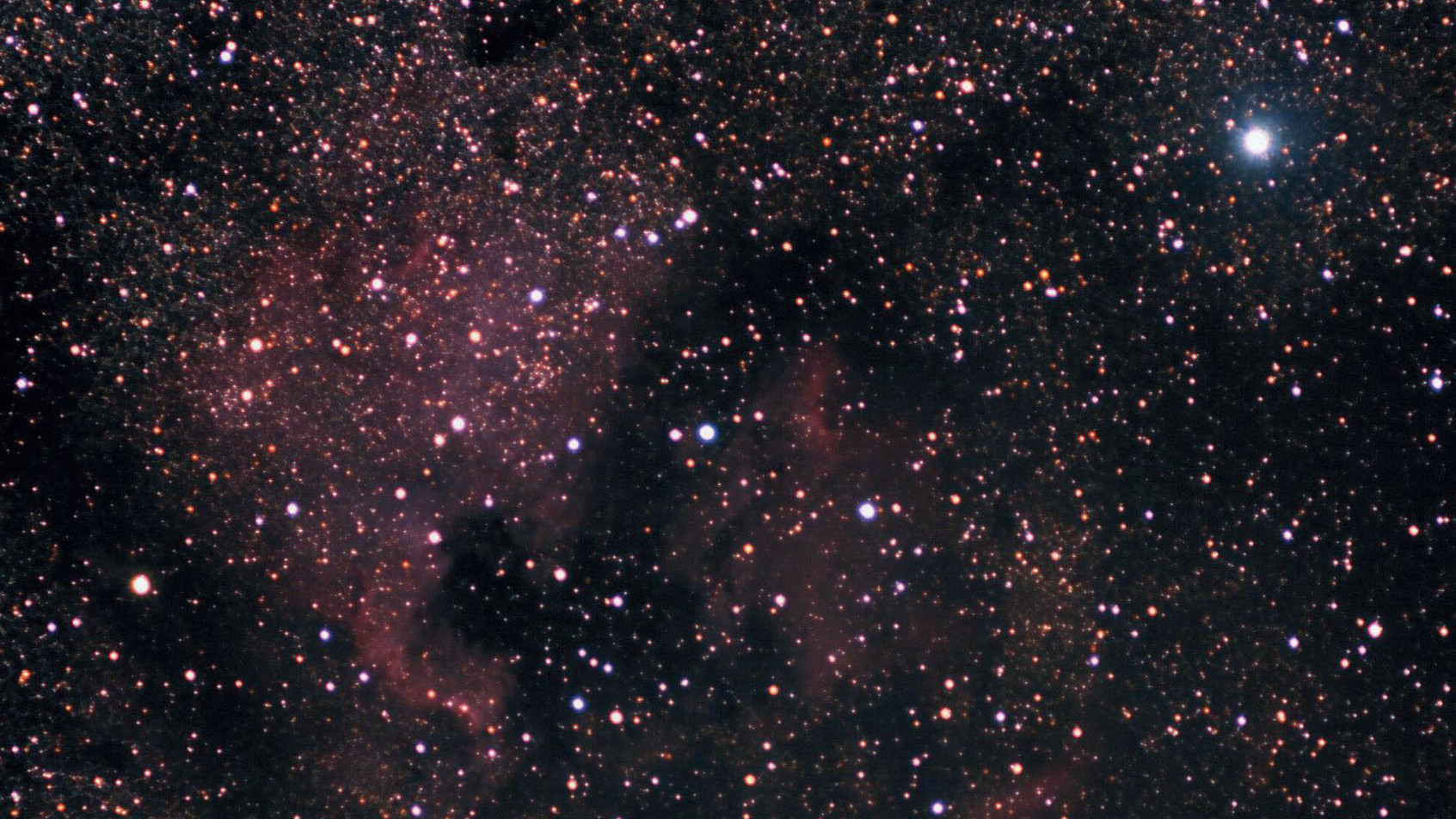In the northern regions of Cygnus
Besides star cluster M39, which is as large as the full Moon, the North America Nebula is another fascinating target, although this can only be seen under dark sky conditions.
 South-east of Deneb (the bright star at the top right) you will find NGC 7000, the North America Nebula, one of the most beautiful emission nebulae. The Little Orion asterism can be seen to the left of the centre of the image, or to the east of the Gulf of Mexico.
Marcus Degenkolbe
South-east of Deneb (the bright star at the top right) you will find NGC 7000, the North America Nebula, one of the most beautiful emission nebulae. The Little Orion asterism can be seen to the left of the centre of the image, or to the east of the Gulf of Mexico.
Marcus DegenkolbeThere are so many interesting binocular objects in the constellation of Cygnus that you could spend several days touring its sights. Perhaps the most diverse area is located to the north, in the vicinity of Deneb, the star that marks Cygnus’ tail.
Spectacular dark nebula
Around 9° northwest of Deneb, between the magnitude 4 stars 63 Cyg and π2 Cyg you will find M39; a striking, full-moon-sized open cluster of stars, which reveals its triangular shape even through smaller binoculars. Up to two dozen stars may be visible, depending on the size of your optics and the observing conditions. If the conditions are good, then just 3° east of M39, i.e. around half a field of view, you will be able to make out one of the most fascinating dark nebulae: Barnard 168 (B168). Due to its length of around 1.5°, this tubular structure with the nickname Dark Cigar is another great binoculars object, which really comes into its own thanks to the abundance of stars in its vicinity.
North America in the night sky
Starting once again from Deneb, but this time heading towards the southeast, we find another fascinating emission nebula between 57 Cyg and ξ Cyg: the North America Nebula or NGC 7000. Its gas does not swallow up the light of the stars behind it, as Barnard 168 does, but rather it is stimulated to shine by these stars. As with the Dark Cigar, NGC 7000 is easiest to detect under a dark sky; averted vision and the avoidance of stray light do the rest.
A good aid to locating NGC 7000 is a small asterism almost 1° southeast of 57 Cyg, which looks a little like the constellation of Orion. However, it is only 0.5° in size and consists of stars between magnitudes 7 and 9. This is known as Little Orion, and is listed in some catalogues as Leiter 9. Its stars, however, only appear to belong together. It is located in the Gulf of Mexico region of the North American Nebula, in an area of low nebulosity. The brightest part of NGC 7000, that is, Central America, should be visible a little to the east. Around the nebula there are a number of other star clusters and dark nebulae which are not so easy to see with binoculars, but which make a further future tour around this celestial region worthwhile.
 Deneb points the way to the destinations on this binoculars tour. J. Scholten
Deneb points the way to the destinations on this binoculars tour. J. ScholtenAuthor: Kay Hempel / Licence: Oculum-Verlag GmbH
